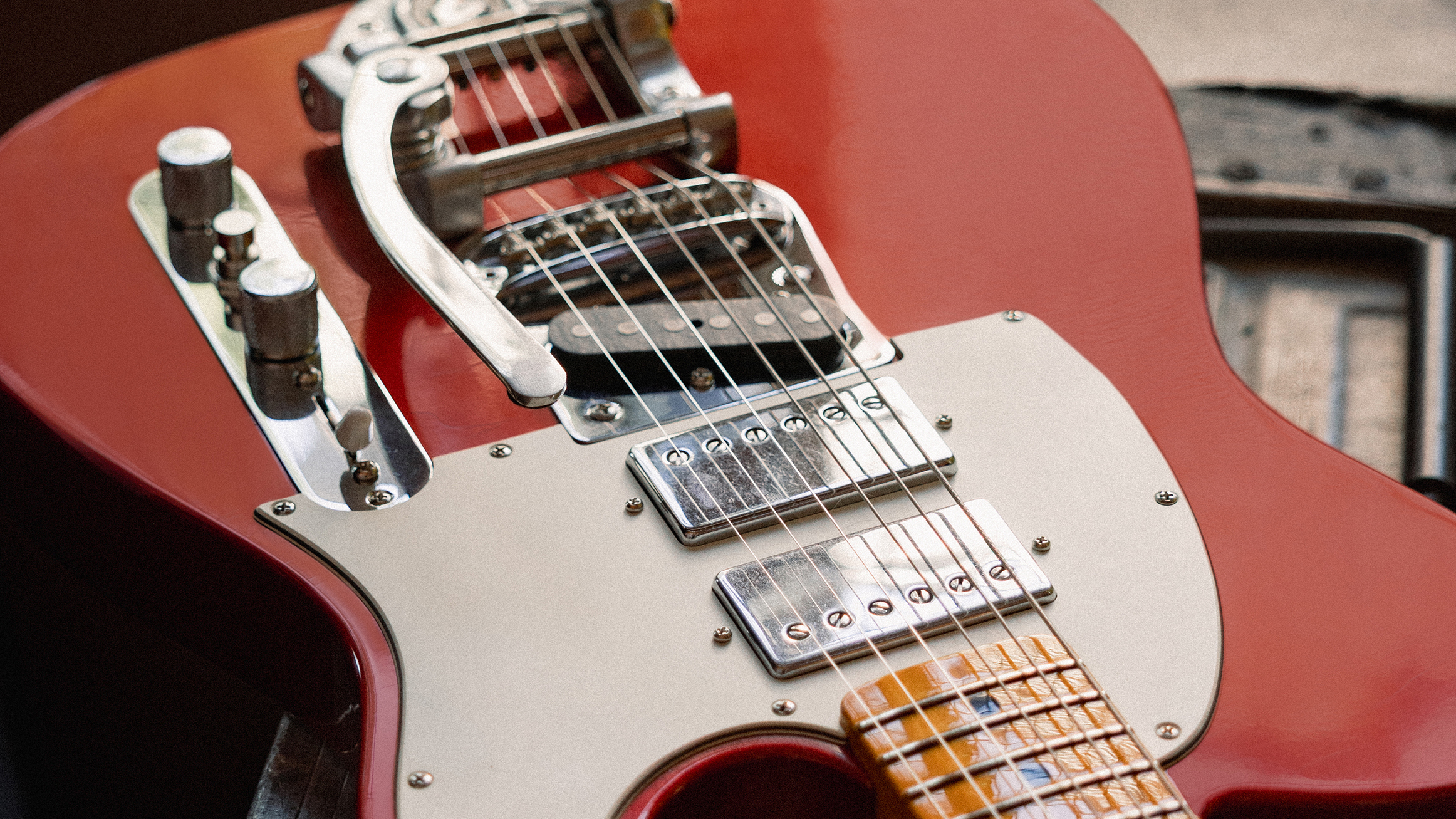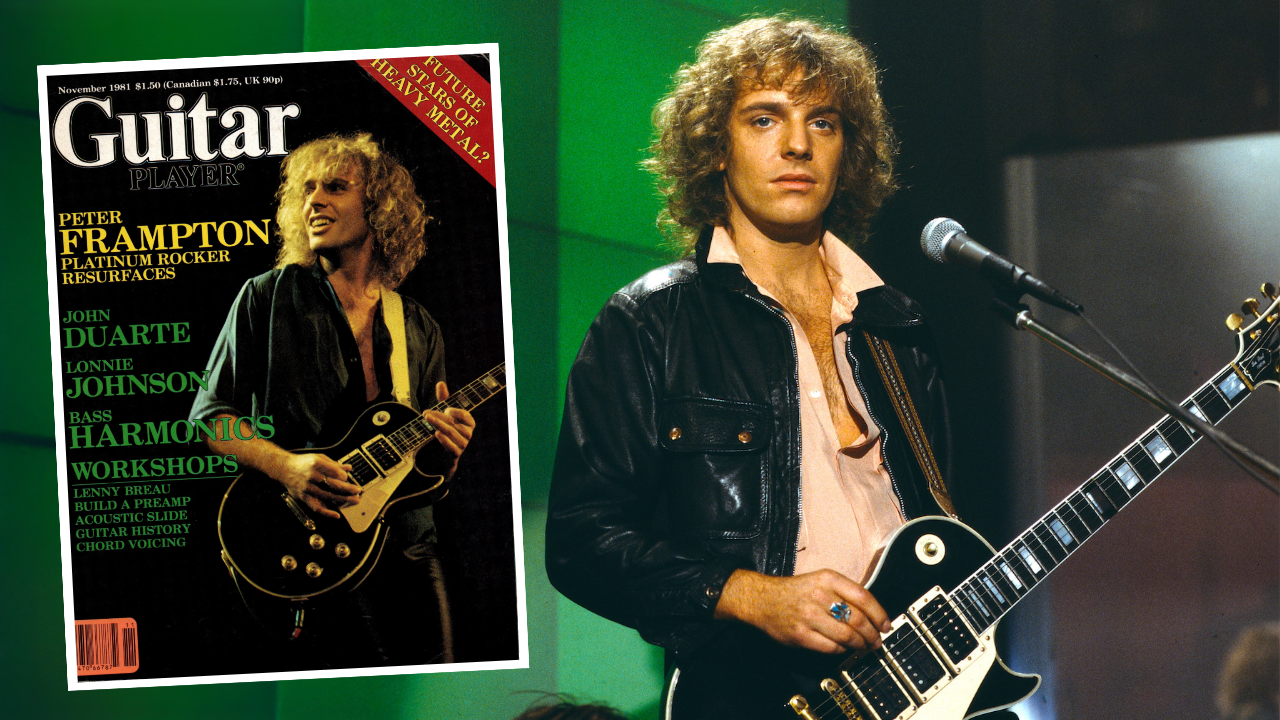GuitarPlayer Verdict
With four instantly available presets for clean/crunch/lead/etc options and usable chorus, delay and reverb, this little box makes for a powerful and affordable package
Pros
- +
Great-sounding digital amp and effects modeling
- +
IR capture capabilities
- +
Lots of functionality
- +
Compact and well-priced
Cons
- -
Effects slots are fixed
- -
No overdrive in the unit
You can trust Guitar Player.
The release of the Quad Cortex floor unit by acclaimed amp-modeler plug-in manufacturer Neural DSP in 2021 caused something of a stir in the market, while igniting the kinds of debates that passionate digital riggers often dive into when a new shark swims into their waters.
The ruggedly built Quad Cortex was an Editors' Pick Award winner when reviewed in Guitar Player’s July 2021 issue. It received raves from many users happy with its compact size, sound quality, processing power, easy graphic interface, and ability to easily execute digital captures of analog amps, pedals and cabs right in the box.
Some some were occasionally frustrated with the maker’s slow roll-out of updates to cover further desirable functions or fix perceived issues. Regardless, the Quad Cortex quickly became a contender against market leaders like Fractal, Line 6 Helix, Kemper and others.
The new Nano Cortex hits the streets in a much smaller enclosure (5.6 by 4 by 2.4 inches), weighs just 1.36 pounds, and costs roughly a third of the QC’s price. While it does somewhat less than its big brother and lacks its user-friendly visuals, it still presents a powerful digital amp, cab and effects processor and capture unit in a box that fits in a Ziploc sandwich bag.
Styled akin to the amp-in-a-box (AIAB) pedals that have become popular these past several years, the Nano Cortex can be used to dial in the currently selected capture and cab IR as the “amp” portion of a semi-traditional pedalboard, with drive pedals ahead of it and wet effects off the back end. But it does much more than that. The highlights among its features include:
• 64 preset slots
• 5 IR slots
• 5 FX slots (used separately or combined, but in a fixed order)
• MIDI support and Bluetooth connectivity
• Onboard Neural Capture capabilities
• 25 Capture slots arranged in five banks
The pedal-style interface includes traditional control knobs for gain, bass, mid, treble, FX Amount and level. Push buttons enable the Bank, FX, Exit, Capture and Save function. The two foot switches let you toggle between four presets and capture or select IRs, and they double as rotary knobs for scrolling the Capture bank and IRs.
Basic connectivity includes a single ¼-inch input, stereo 1/4-inch outputs (one of which doubles as Capture Out for that function with ground lift button), 1/4-inch TRS Exp/MIDI jack, 1/8-inch headphone jack with level control, USB-C jack, center-negative connection for a nine- or 12-volt DC supply (not included; 600mA-plus required), and finally, a combo XLR/1/4-inch Capture Input on the side of the unit with Boost switch for low-gain incoming signals. It should be added that the USB-C jack lets the Nano Cortex function as a low-latency audio interface with 24-bit, 48 kHz recording. An onboard tuner is also provided fr added convenience.
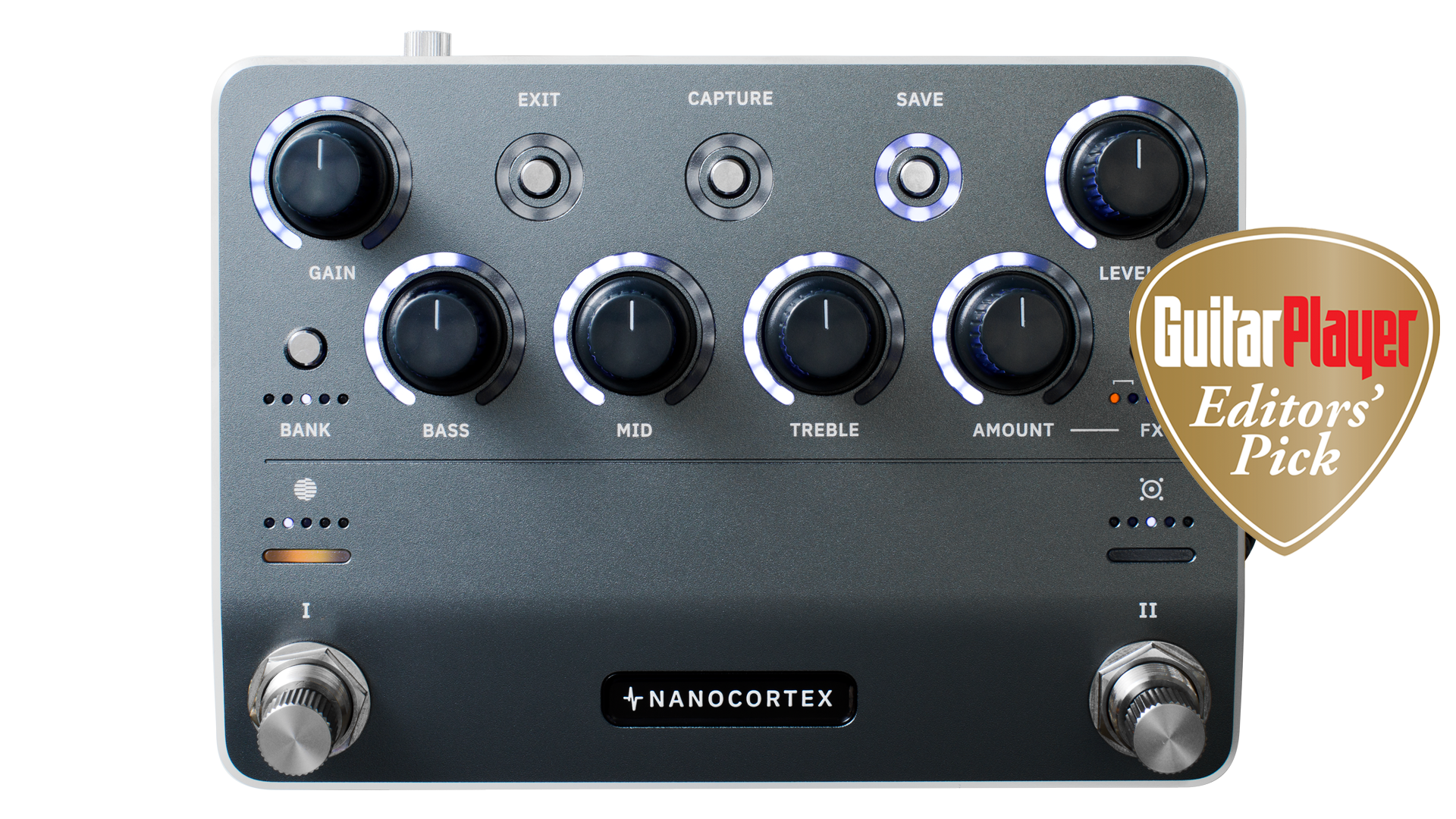
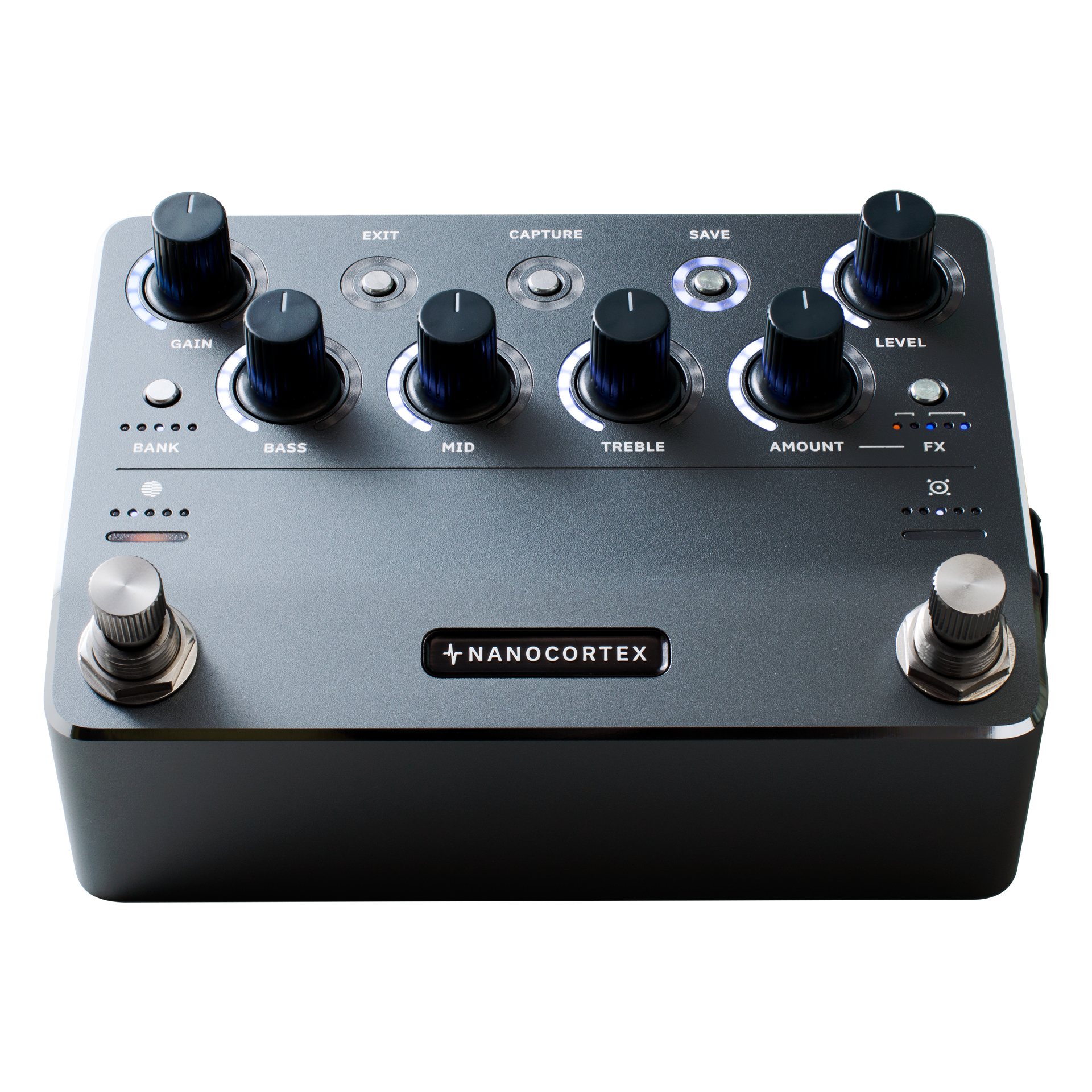
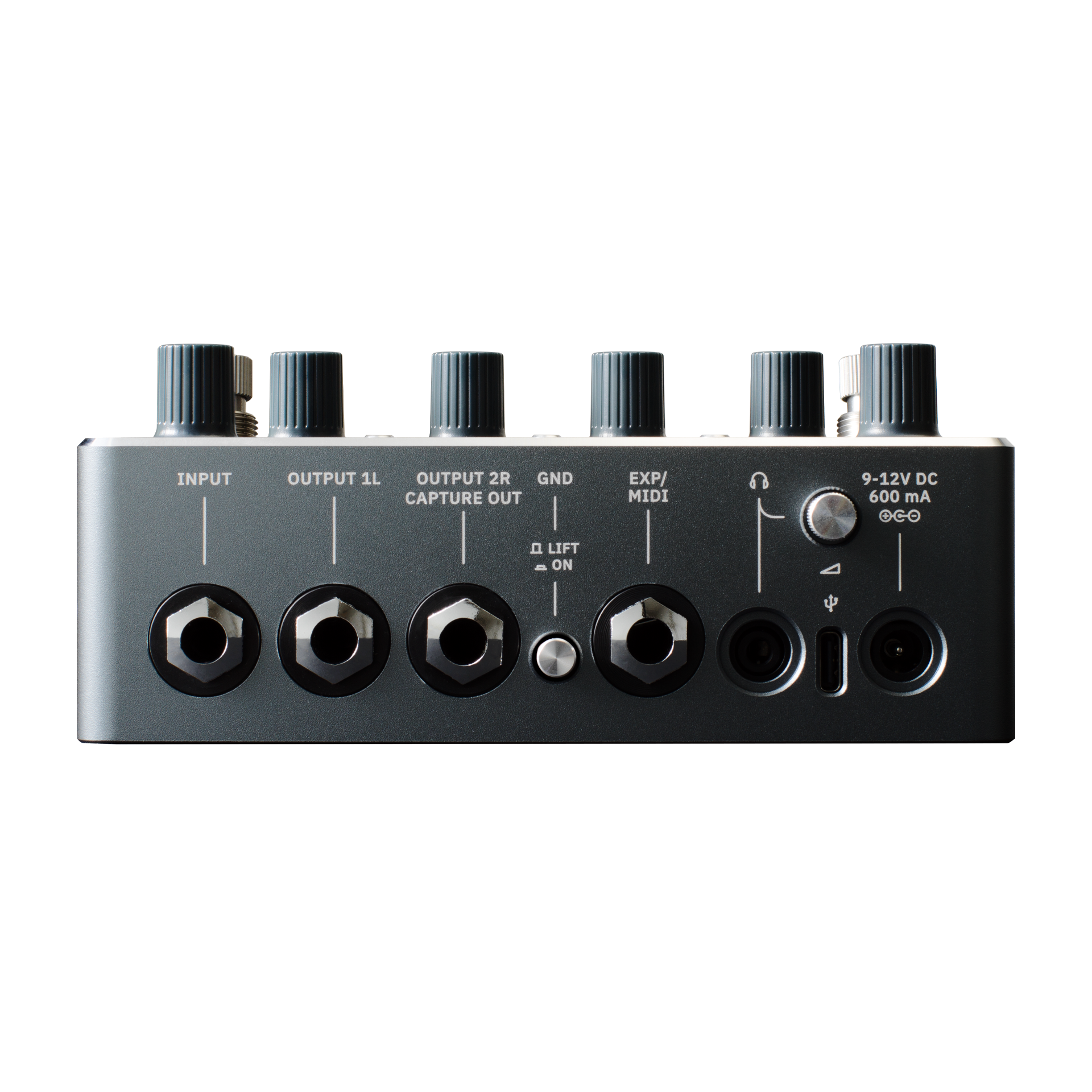
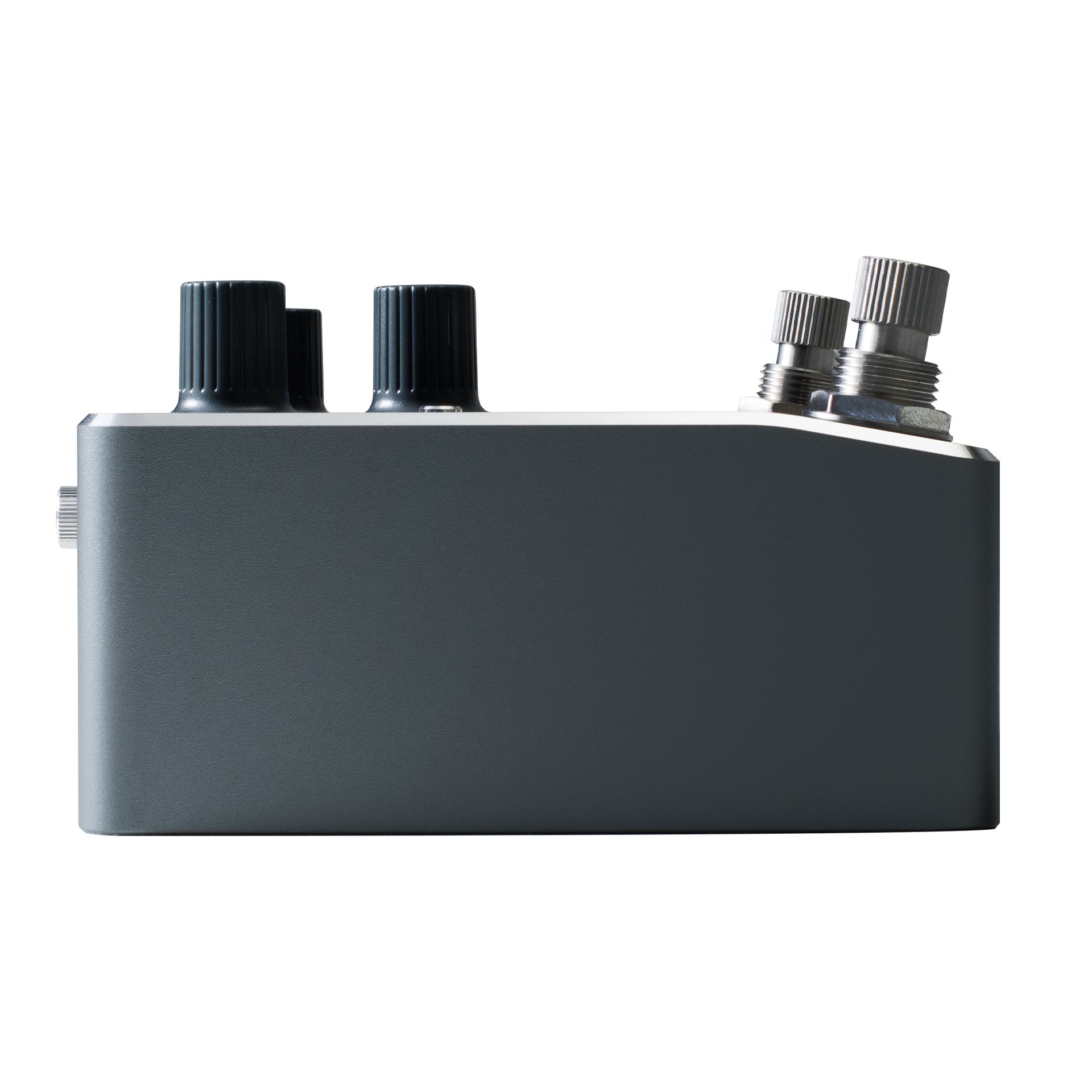
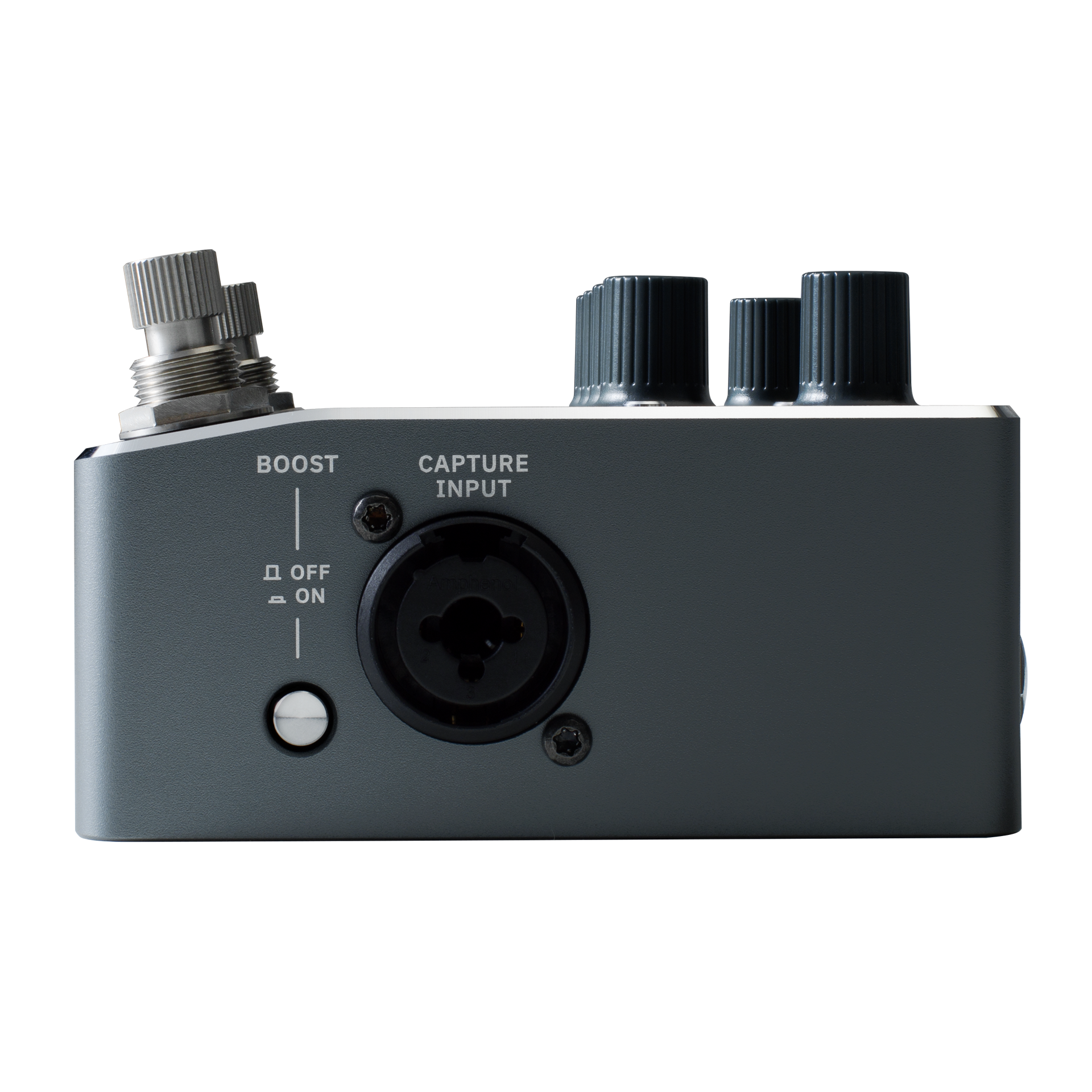
I won’t try to replicate the manual here — which is worth reading to clarify some initially enigmatic functions regarding Preset, Bank, IR and FX selections in particular — but it basically allows you to select between five banks of five amp captures each, a total five onboard IRs, and four pre-loaded presets just as it sits.
You can also access a lot more using the Cortex Cloud app for iOS or Windows via Bluetooth. The Cortex Cloud provides access to thousands of other Neural Captures, which can be loaded into the slots on the Nano Cortex for use individually or in presets. This is also the place for swapping in other captured or third-party IRs.
As much as it can do, however, there are also a few limitations. Neural DSP notes that the five onboard effects exist in a “fixed signal chain,” but further exploration reveals that’s fixed in terms of both block selection and order. Put simply, you get what you get: an Adaptive Gate (a.k.a. noise reduction) and Transpose positioned pre amp capture; and chorus (a Boss DC-2W emulation), analog delay (a BBD emulation) and Mind Hall Reverb (a Lexicon 224 emulation) positioned post. Any or all can be switched on or off and their parameters adjusted, but the order cannot be changed, nor can a different type or version of effect be loaded into any of these positions.
My own biggest gripe with this is the lack of any form of drive pedal in the pre position (which might arguably prove more useful to a greater number of players than the Transpose effect you’re stuck with, which is useful for capo-less key changes and the like). This also means, rather oddly, you can capture your favorite overdrive pedals on the unit but can’t use them unless you slot them in place of the amp capture and use the Nano Cortex as a digital OD-pedal modeler rather than an amp modeler. (When asked about such limitations, Neural DSP told us, “It is likely we will expand upon the platform in the future.”) Also, you can only access four presets on the fly using the hardware on its own — toggling between two each on foot switches I and II — but MIDI connection enables a lot more possibilities there.
Regardless, this compact box still does a lot, and it benefits from an easy-to-use phone app that increases editing and use functionality exponentially. The Capture capabilities alone will bring a lot of people to the table, and they’re dead simple to use. During testing, I created several amp and pedal captures in a process that takes about five minutes per item, and was very impressed with the results. They included a cheeky capture of another plug-in designer’s popular digital AIAB pedal, which sounded extremely close to the original in A/B comparisons.
I tested the Nano Cortex using a Fender Telecaster, Gibson ES-355 and Collings 470-JL direct into headphones, into a Universal Audio Apollo x6 interface and studio monitors, and a couple of different powered FRFR (Full Range, Flat Response) options. First and foremost, finding great-sounding presets and dialing up my own by mixing-and-matching captures and IRs (and tweaking gain and EQ to taste) were both as easy and rewarding as I could hope. Given my prior experience with the Quad Cortex, the realism, dynamics and overall depth of the Nano’s amp captures and presets came as no surprise, but it was still something of an eye-opener emanating from a box this size.
Personally, I initially found the high-gain options more satisfying than the clean tones, something I’d also experienced with the Quad Cortex and which seems to speak to Neural DSP’s popularity with the heavier-rocking crowd in general. However, quality renditions of clean and vintage-voiced edge-of-breakup tones are certainly achievable with a little tweaking and by exploring other available captures and presets in the library and the cloud. That’s what the Neural Capture capabilities are for. And, ultimately, my favorite rendition of a certain semi-clean, mid-sized black-panel American combo of the ’60s came courtesy of that capture of another manufacturer’s product.
Obviously, the cab/speaker IR selections play a big part in any rig editing, and Neural DSP provides some excellent options here. It would be handy to have more than five available on the unit itself, but they are easily dialed up within the Cortex Cloud, which enables loading of your third-party IRs from popular suppliers, too. And for all my griping about the fixed nature of the five onboard FX, those available function well and sound great.
Users seeking more options in a pedalboard setup might use a handful of favorite analog overdrive pedals in front of the Nano Cortex and any of a number of stellar delay and reverb processors after to achieve a more personalized rig. But even as it sits, with four instantly available presets for clean/crunch/lead/etc options on the fly and very usable chorus, delay and reverb, this little box makes for a powerful performance package at this price, and earns an Editor’s Pick Award doing so.
SPECIFICATIONS
CONTACT neuraldsp.com
PRICE $549 list/street
CONTROLS Gain, bass, mid, treble, FX amount, level. Push buttons for Bank, FX, Exit, Capture and Save. Two combo footswitch/rotary knobs for Capture and IR selection and preset selection.
DSP 2GHz SHARC processor
CONNECTIVITY Single ¼" input, L and R Output (L doubles as Capture Out), XLR/¼" Capture In with Boost switch, ¼" Exp/MIDI jack, 1/8" Headphone out with level control, USB-C jack, 9-12V DC input (center-negative, 600mA required).
SIZE 5.6"x4"x2.4"
WEIGHT 1.36 lbs
MADE IN Finland
KUDOS Great-sounding digital amp and effects modeling, capture capabilities, and a ton of functionality in a compact and well-priced box
CONCERNS Effects slots are fixed, and there’s no overdrive pedal available in the unit
Dave Hunter is a writer and consulting editor for Guitar Player magazine. His prolific output as author includes Fender 75 Years, The Guitar Amp Handbook, The British Amp Invasion, Ultimate Star Guitars, Guitar Effects Pedals, The Guitar Pickup Handbook, The Fender Telecaster and several other titles. Hunter is a former editor of The Guitar Magazine (UK), and a contributor to Vintage Guitar, Premier Guitar, The Connoisseur and other publications. A contributing essayist to the United States Library of Congress National Recording Preservation Board’s Permanent Archive, he lives in Kittery, ME, with his wife and their two children and fronts the bands A Different Engine and The Stereo Field.
"The only thing missing is the noise from the tape loop." We review the Strymon EC-1 Single Head dTape Echo, a convincing take on a very special vintage tube Echoplex
"BigSky MX will be replacing the BigSky as my go-to reverb pedal. I’ve heard nothing that covers all the bases with such pristine and detailed audio quality." We crowned the Strymon BigSky MX the champ of multi-reverb pedals


